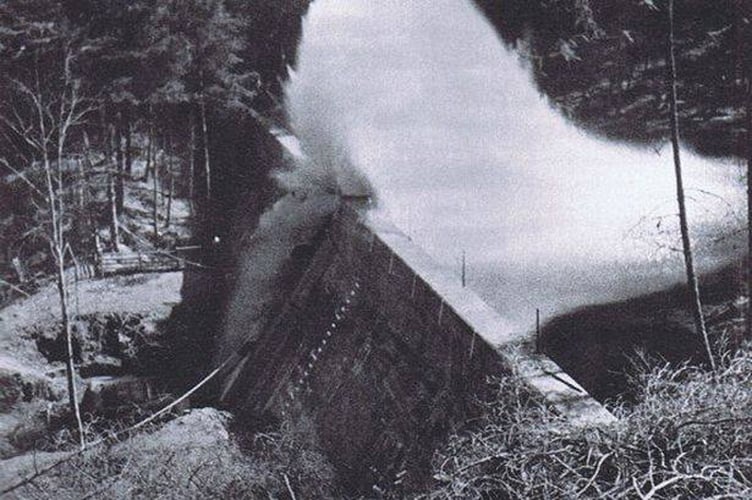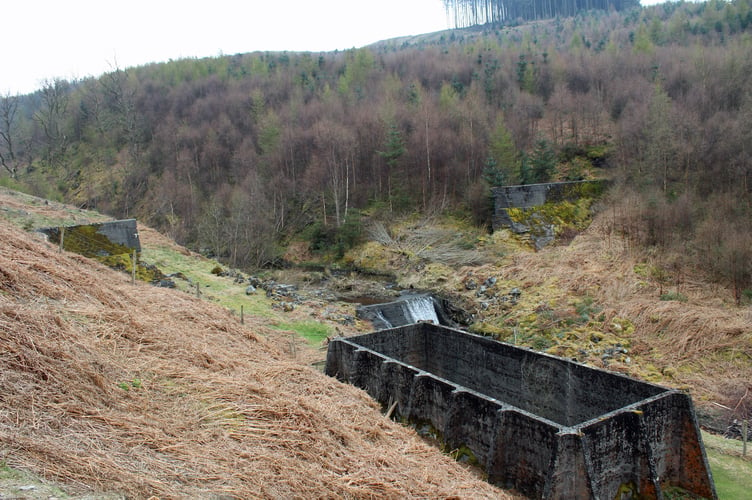Few people are aware of the significant role played by a Mid Wales beauty spot in in in the RAF’s famous Dambusters Raid on Germany during the Second World War – 80 years ago.
The Elan Valley near Rhayader was chosen for secret testing of the explosives used in the ingenious Barnes Wallis ‘bouncing bomb’, the key weapon deployed in the raid.
On the night of May 16-17, 1943, crews from 617 Squadron, led by Wing Commander Guy Gibson, took off in 19 Lancaster bombers from RAF Scampton, Lincolnshire, each carrying the ‘bouncing bomb’ and dropped them in Nazi Germany’s Ruhr industrial heartland.

The mission, which left German factories and mines badly damaged, was later immortalised in the 1955 film, The Dam Busters. However, eight of the Dambuster crews did not return and 53 men were killed. Three more, who were presumed dead, spent the rest of the war in prisoner of war camps.
The idea for the Dambusters raid originated in 1940, when aeronautical designer Dr Wallis, assistant chief designer for Armstrong Vickers, calculated the explosive power required to breach the Ruhr dams and discovered that no existing bomber could carry a large enough bomb.
However, he realised that smaller bombs accurately positioned at the foot of the dam could have the same effect. To make this possible, Dr Wallis designed the “bouncing bomb” that would skip across the water and hit the dam.
In July 1942, the prototype charge was proof-tested at a small dam in the Elan Valley, where 280lbs of high-explosive destroyed the central portion of the masonry dam. The experiment was a complete success.

The evocative remains of the bombed Nant-y-Gro Dam can still be seen today and are protected as one of Cadw’s Scheduled Ancient Monuments. Walkers can follow a footpath from the Caban Coch Dam, on opposite side of the river from the Elan Valley Visitor Centre.
The Elan Valley was chosen to test the ‘bouncing bomb’ explosives because it was already being used as a firing range by the military. Due to its remoteness, away from the prying eyes of any Nazi spies, the picturesque valley was deemed to be the ideal spot.
Michael Booth, Elan Valley attractions manager for Dŵr Cymru Welsh Water, said local people were proud that the valley had played such an important role in the development of the ‘bouncing bomb’.
The 80th anniversary of the Dambusters' famous bouncing bomb was marked this week
The remnants of Nant-y-Gro Dam are the focus of a popular self-guided trail and guided tour in the valley. Elan Valley Visitor Centre also has a video and photographs in its exhibition of the dam being blown up in preparation for the Dambusters Raid.
“Nant y Gro Dam was a fifth scale of the Ruhr dams which is why it was chosen to test the bouncing bomb explosives,” explained Michael. “It was an abandoned dam in a quiet, isolated spot which fitted all the requirements of the RAF and Barnes Wallis.
“They needed to work out how much explosive was required and at what depth to cause maximum damage. There were three parts - the explosives, the bouncing bomb and the aiming system - and they all needed to work perfectly. The bouncing element was to ensure that the explosives detonated underwater and close to the dam structure.”
“Part of the rich heritage of the Elan Valley, Nant y Gro Dam played a crucial role in the nationally significant events of May 16, 1943 during Second World War.

“There are quite a few protected wartime remnants, such as pillboxes, around the valley reservoirs. During the war, Birmingham Corporation employed 600 special constables to ensure that the water pipeline from the valley to Birmingham was protected.
“These constables were each presented with a medal which features the Foel Tower at Garreg-ddu Reservoir in the valley.”
Elan Valley Visitor Centre and Dŵr Cymru Welsh Water are members of MWT Cymru (Mid Wales Tourism), which represents around 600 tourism and hospitality businesses across Powys, Ceredigion and Southern Snowdonia.
The Elan Valley is just three miles from Rhayader, on the southern edge of the Cambrian Mountains, covers an area over 72 square miles and is designated as an International Dark Sky Park. The area is famous for its spectacular chain of six dams and Victorian architecture.




